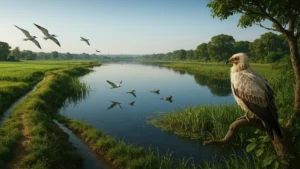In a bold move aimed at revolutionizing the educational landscape, the Madhya Pradesh government has announced a groundbreaking initiative – the introduction of a ‘bag-less school’ policy. This policy, set to be implemented once a week from the upcoming academic session of 2024-25, marks a significant departure from traditional educational norms and underscores the government’s commitment to student welfare and holistic development.
Understanding the Weight Limits
Central to this initiative is the establishment of clear weight limits for students’ school bags, as outlined in a notice issued by the state government. The weight limits vary according to students’ respective classes, ranging from 1.6 to 2.2 kg for classes 1 and 2, to 2.5 to 4.5 kg for classes 9 and 10. This meticulous categorization reflects a nuanced understanding of the physical strain that heavy school bags can impose on young learners, and underscores the government’s proactive approach to mitigating this issue.
The Purpose Behind ‘Bag-less School’
Education Minister, in elucidating the rationale behind the ‘bag-less school’ initiative, articulates a vision wherein students are afforded the opportunity to revel in the joy of learning unencumbered by the burden of heavy bags. By designating one day each week as ‘bag-less,’ students will be encouraged to participate in a diverse array of activities – from games and sports to cultural programs and music – fostering a holistic and enriching educational experience. This initiative not only seeks to alleviate the physical strain on students but also aims to nurture their overall well-being and emotional resilience.
Ensuring Strict Implementation
Crucially, the Madhya Pradesh government has underscored the importance of strict implementation of the school bag policy across all government and private schools in the state. This commitment to enforcement reflects a recognition of the urgency of the issue and a determination to effect tangible change in the educational landscape. By prioritizing adherence to the policy, the government demonstrates its unwavering dedication to promoting student welfare and fostering a conducive learning environment.
Important takeaways from all competitive exam
- Madhya Pradesh Capital: Bhopal;
- Madhya Pradesh Bird: Indian paradise flycatcher;
- Madhya Pradesh Flower: White lily;
- Madhya Pradesh Formation: 1 November 1956;
- Madhya Pradesh CM: Mohan Yadav;
- Madhya Pradesh Governor: Mangubhai Chhaganbhai Patel.




 Chhattisgarh Gets Its First Ramsar Site:...
Chhattisgarh Gets Its First Ramsar Site:...
 Maharashtra Ends the Century-Old Pagdi S...
Maharashtra Ends the Century-Old Pagdi S...
 Maharashtra Govt Partners with Microsoft...
Maharashtra Govt Partners with Microsoft...







